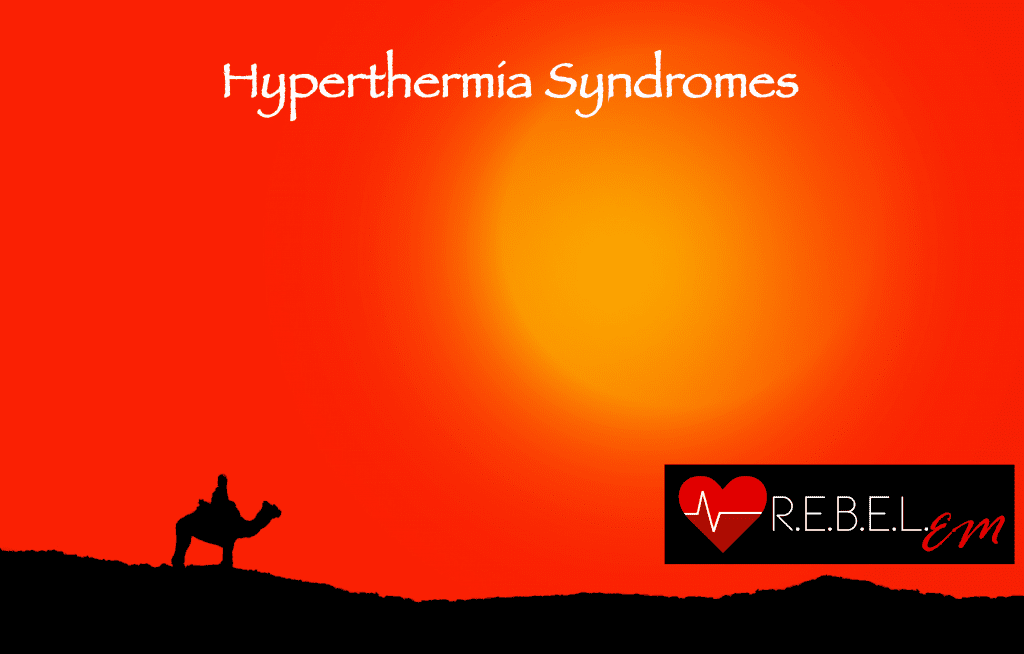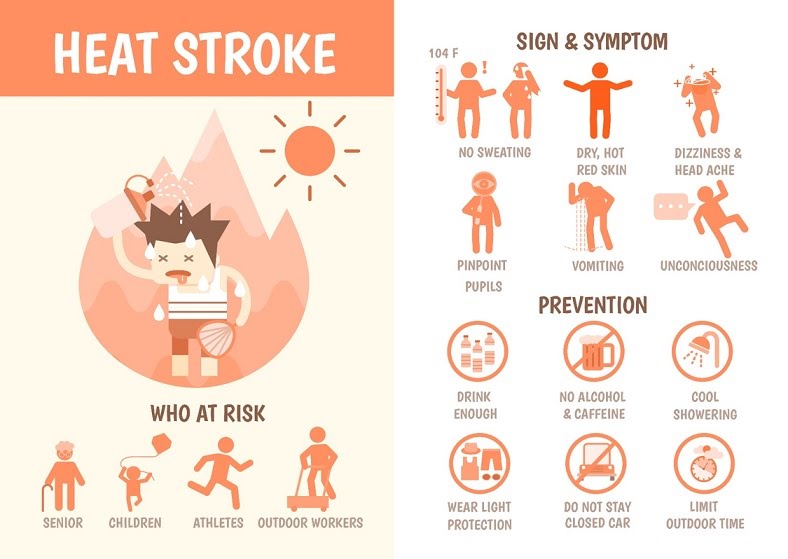In the modern world, where global temperatures are rising due to climate change, heat-related illnesses like Heat Exhaustion (HE) have become a growing concern. This condition, often underestimated, can lead to severe health complications if not addressed promptly. Understanding its causes, recognizing its symptoms, and adopting preventive measures can help individuals stay safe during hot weather. In this article, we will delve into the details of what heat exhaustion is, how it occurs, and what steps can be taken to manage and prevent it.

What is Heat Exhaustion?
Heat exhaustion is a condition that arises when the body overheats due to prolonged exposure to high temperatures and inadequate hydration. It is considered a mild form of heat-related illness but should not be ignored, as it can progress to heatstroke, a life-threatening condition. Heat exhaustion typically occurs in hot and humid environments, especially when physical activity is involved. The body’s natural cooling mechanisms, such as sweating, may become overwhelmed, leading to an inability to regulate core temperature effectively.
Common Causes of Heat Exhaustion
Several factors contribute to the development of heat exhaustion. Below are some of the most common causes:
- Prolonged Exposure to High Temperatures: Spending extended periods in hot environments, whether indoors or outdoors, increases the risk of heat exhaustion.
- High Humidity Levels: Humidity prevents sweat from evaporating efficiently, which is essential for cooling the body.
- Strenuous Physical Activity: Engaging in intense exercise or labor in hot conditions can cause the body to overheat quickly.
- Dehydration: Insufficient fluid intake reduces the body’s ability to produce sweat, impairing its cooling mechanism.
- Inadequate Ventilation: Poor airflow in indoor spaces can trap heat, making it difficult for the body to cool down.
- Clothing Choices: Wearing heavy or tight clothing in hot weather can hinder the body’s ability to release heat.
Symptoms of Heat Exhaustion
Recognizing the symptoms of heat exhaustion is crucial for timely intervention. The signs can vary from person to person, but the following are the most commonly observed:
- Heavy Sweating: Excessive sweating is one of the first indicators that the body is struggling to cool itself.
- Fatigue: A feeling of extreme tiredness or weakness is often reported by individuals experiencing heat exhaustion.
- Dizziness or Lightheadedness: These symptoms occur due to reduced blood flow to the brain as the body tries to cool itself.
- Nausea or Vomiting: Gastrointestinal distress is a common sign of heat-related illnesses.
- Muscle Cramps: Dehydration and electrolyte imbalances can lead to painful muscle spasms.
- Rapid Heartbeat: The heart works harder to circulate blood and cool the body, resulting in an elevated pulse.
- Cool, Pale, and Clammy Skin: Unlike heatstroke, heat exhaustion often presents with moist and cool skin rather than dry and hot skin.
- Fainting: In severe cases, individuals may lose consciousness due to the body’s inability to cope with the heat.
Who is at Risk?
Certain groups of people are more vulnerable to heat exhaustion than others. These include:
- Children and Infants: Their bodies are less efficient at regulating temperature.
- Elderly Individuals: Aging reduces the body’s ability to adapt to extreme temperatures.
- Athletes and Outdoor Workers: Those who engage in physical activities in hot environments are at higher risk.
- Individuals with Chronic Illnesses: Conditions like diabetes, heart disease, and obesity can impair the body’s ability to handle heat.
- People Taking Certain Medications: Some medications, such as diuretics and antihistamines, can interfere with the body’s cooling mechanisms.
Preventing Heat Exhaustion
Prevention is always better than cure, especially when it comes to heat-related illnesses. By adopting simple yet effective strategies, individuals can significantly reduce their risk of developing heat exhaustion.
Stay Hydrated
Proper hydration is one of the most critical steps in preventing heat exhaustion. Drinking plenty of water throughout the day helps maintain the body’s fluid balance and supports the sweating process. It is important to note that thirst is not always a reliable indicator of dehydration, so individuals should drink water even when they do not feel thirsty. Avoiding alcohol and caffeinated beverages is also recommended, as these can contribute to dehydration.
Dress Appropriately
Wearing lightweight, loose-fitting, and light-colored clothing can help the body stay cool. Dark colors absorb heat, while light colors reflect it. Additionally, wearing a wide-brimmed hat or using an umbrella can provide extra protection from direct sunlight.
Limit Outdoor Activities
During peak heat hours, usually between late morning and early afternoon, it is advisable to stay indoors or in shaded areas. If outdoor activities are unavoidable, taking frequent breaks in cool or air-conditioned spaces can help the body recover.
Use Cooling Techniques
Utilizing fans, air conditioning, or cool showers can aid in lowering body temperature. Placing a damp cloth on the neck or wrists, where blood vessels are close to the skin, can also provide quick relief.
Acclimatize Gradually
For those who work or exercise in hot environments, gradually acclimatizing to the heat over a period of one to two weeks can improve the body’s tolerance. This involves slowly increasing the duration and intensity of exposure to hot conditions.
Treating Heat Exhaustion
If someone shows signs of heat exhaustion, immediate action is necessary to prevent the condition from worsening. The primary goal of treatment is to cool the body down and restore hydration.
Move to a Cooler Environment
The first step is to move the affected individual to a cooler place, preferably indoors or under shade. Removing excess clothing and loosening tight garments can also aid in cooling the body.
Rehydrate
Encourage the person to drink cool water or sports drinks that contain electrolytes. Avoid giving them alcohol or caffeine, as these can exacerbate dehydration. If the individual is unable to drink due to nausea or vomiting, seek medical attention immediately.
Apply Cooling Measures
Placing cold, wet cloths on the skin, particularly on the forehead, neck, armpits, and groin, can help lower body temperature. Alternatively, immersing the person in a cool bath or using a fan to circulate air can be effective.
Monitor for Improvement
Keep a close eye on the individual’s condition. If symptoms persist or worsen, or if signs of heatstroke appear—such as confusion, seizures, or loss of consciousness—seek emergency medical care without delay.
Rest and Recovery
After initial treatment, it is important for the individual to rest and avoid strenuous activities for the remainder of the day. Continuing to hydrate and monitor for any lingering symptoms is also essential.
When to Seek Medical Attention
While many cases of heat exhaustion can be managed at home, certain situations warrant professional medical intervention. These include:
- Persistent symptoms despite attempts to cool down and rehydrate.
- Signs of heatstroke, such as confusion, agitation, or loss of consciousness.
- Vomiting that prevents adequate fluid intake.
- Underlying health conditions that may complicate recovery.
Conclusion
Heat exhaustion is a manageable condition if recognized and treated promptly. By understanding its causes, being vigilant about symptoms, and adopting preventive measures, individuals can protect themselves and others from the dangers of overheating. Staying informed and prepared is key to ensuring safety during hot weather.





